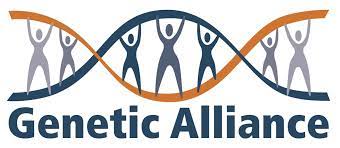Clinical signs of Alström Syndrome
The first sign usually noticed in affected children is an involuntary rapid movement of the eye (nystagmus) and light sensitivity which begins in infancy and eventually leads to a degeneration of the retina, the thin, light-sensitive lining at the back of the eye (retinopathy) and blindness.
Sudden congestive heart failure resulting from dilated cardiomyopathy (dysfunctioning of the heart muscle) is often seen, either in early infancy or adolescence. Older individuals often present with restrictive cardiomyopathy.
Birth weight is usually normal. As toddlers, children are generally overweight (>95th centile). Hearing impairment usually begins before the children are 10 years old. Children become insulin resistant, develop high levels of insulin in the blood, and eventually in late childhood or early adolescence develop type 2 diabetes mellitus.
Other endocrine dysfunctions can include an under or over-active thyroid gland, diminished growth hormone, low testosterone in males and increased androgens in females.
Steatosis (fatty liver) and elevated transaminases (liver enzymes) often develop in childhood and can progress in some patients to cirrhosis and liver failure.
Other findings observed in some Alström Syndrome patients include a darkening of areas of the skin, called acanthosis nigricans, scoliosis or curvature of the spine, short stature, and severe pulmonary problems.
Slowly progressive kidney failure can occur in the second to fourth decade of life. Renal transplantation has been successful in several individuals with Alström Syndrome.
Considerable variability exists in the expression of the clinical signs of Alström Syndrome, even among siblings. Not all people who have Alström Syndrome will experience all of these feature
The following manifestations are observed in most Alström Syndrome cases:
- Nystagmus and photodysphoria in early infancy
- Progressive pigmentary retinopathy (cone-rod dystrophy) leading to blindness
- Childhood obesity, beginning in the first year and often moderating to high-normal weight in adulthood
- Mild to moderate bilateral sensorineural hearing loss
- Congestive heart failure secondary to dilated cardiomyopathy in infancy or early adulthood
- Normal extremities / absence of polydactyly or syndactyly
- Hyperinsulinemia / insulin resistance
- Type 2 diabetes (or NIDDM) developing in early adulthood
- Elevation of hepatic enzymes and steatosis
- Progressive chronic nephropathy that presents as tubular dysfunction and glomerulosclerosis
- Normal intelligence with some reports of delayed early developmental milestones
Manifestations present in some but not all cases include:
- Hypothyroidism
- Splenomegaly
- Portal hypertension
- Hepatic dysfunction
- Alopecia
- Low levels of growth hormone
- Short stature
- Advanced bone age
- Scoliosis and/or kyphosis
- Delay of early developmental milestones
- Hypertension
- Hirsutism, hyperandrogenism
- Hyperlipidemia
- Acanthosis nigricans
- Hyperuricemia
- Male hypogenitalism
- Irregular menses
- Hyperostosis frontalis interna
- Diabetes insipidus
- Frequent urinary tract infections
- Gastrointestinal reflux
- Asthma or respiratory problems
- Hypersecretory lungs
- COPD
REFERENCES:




